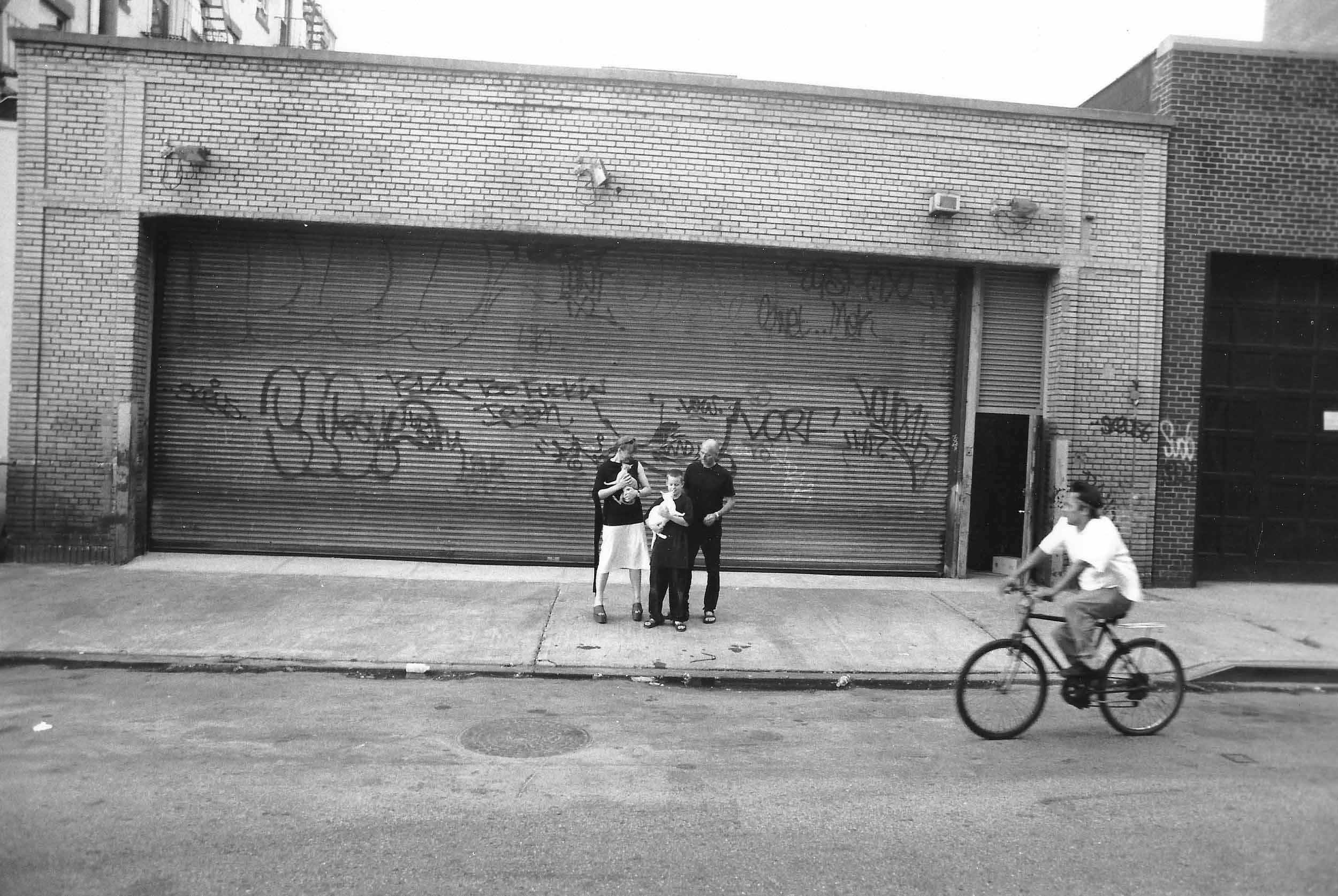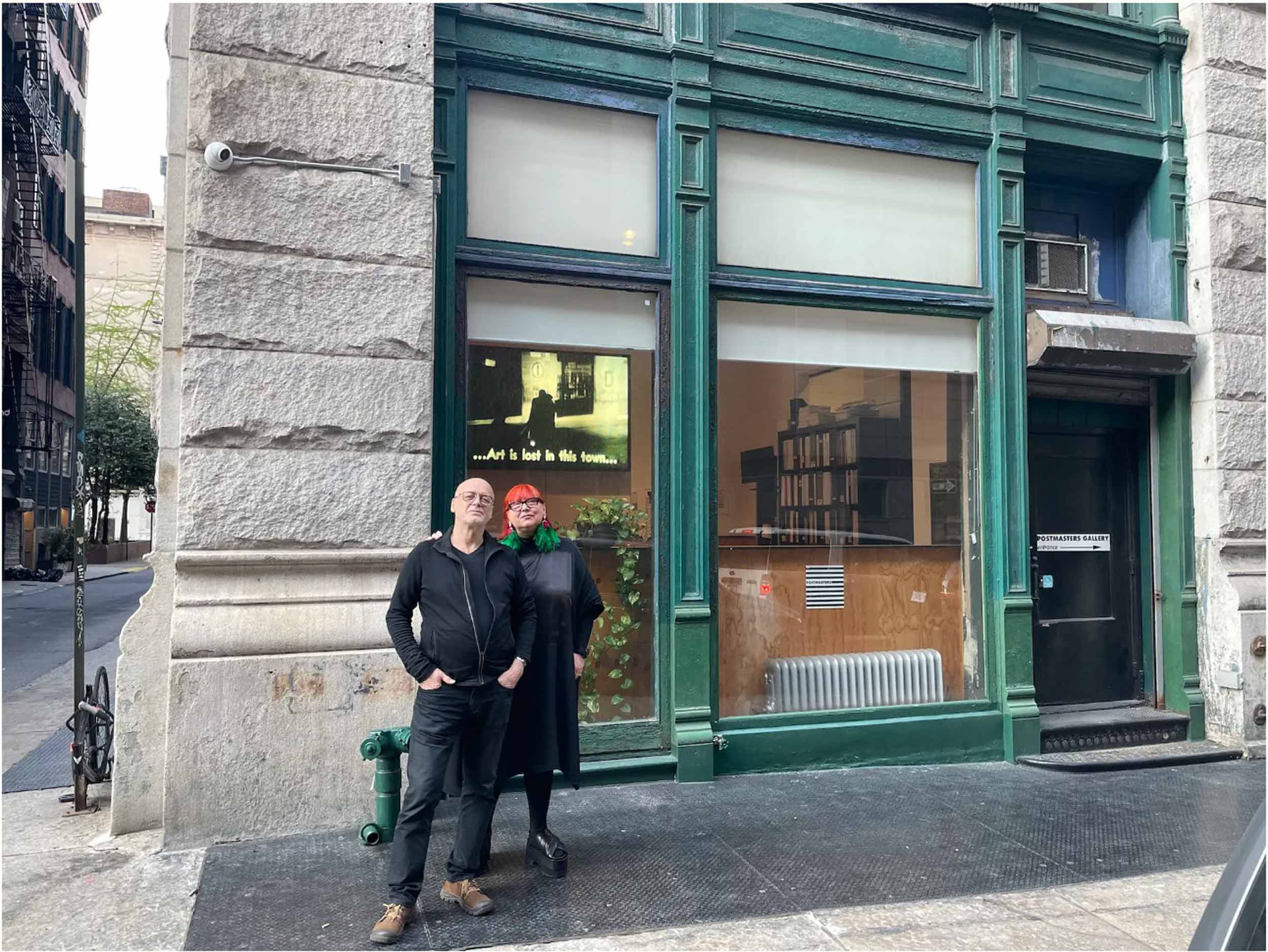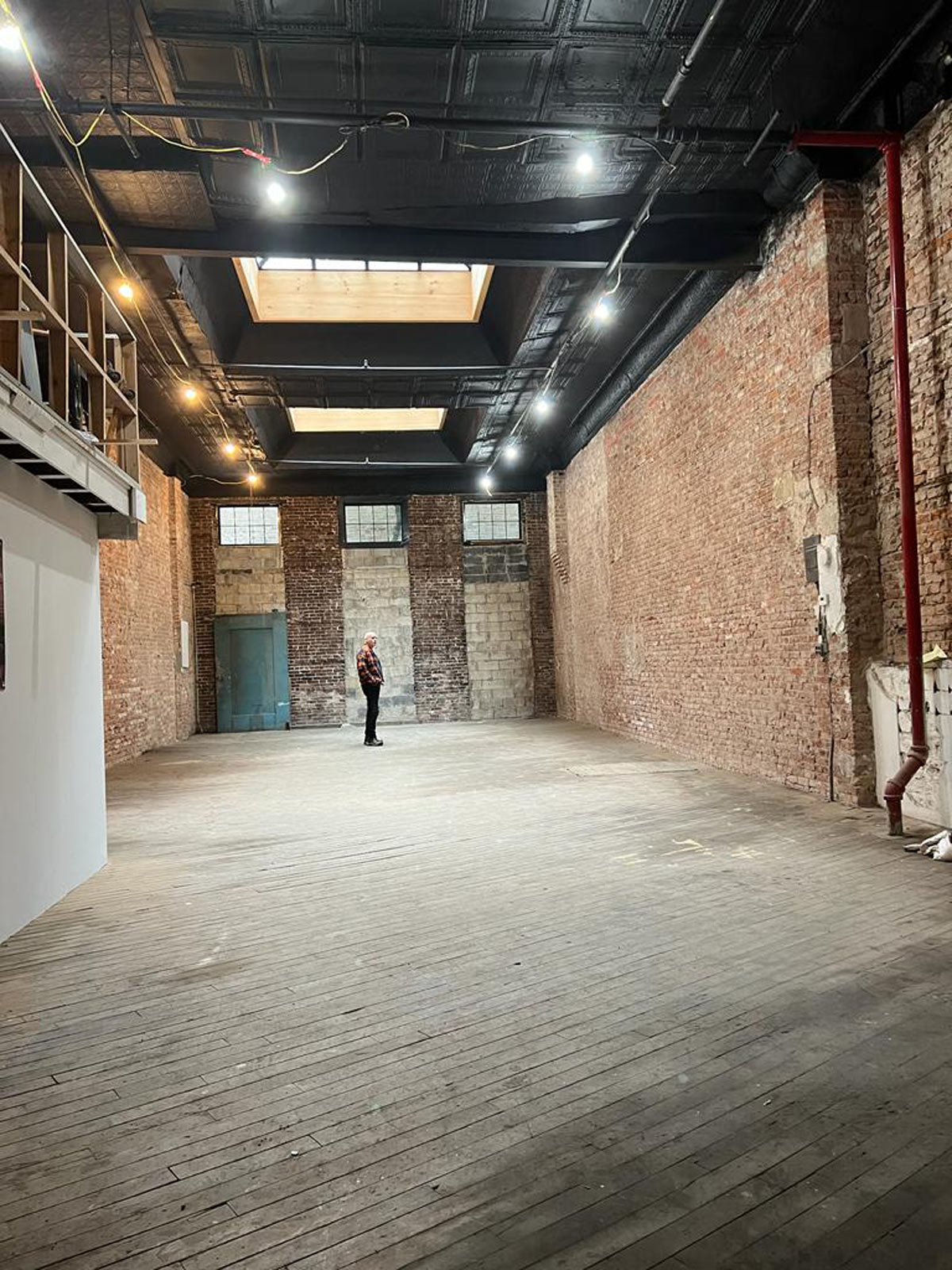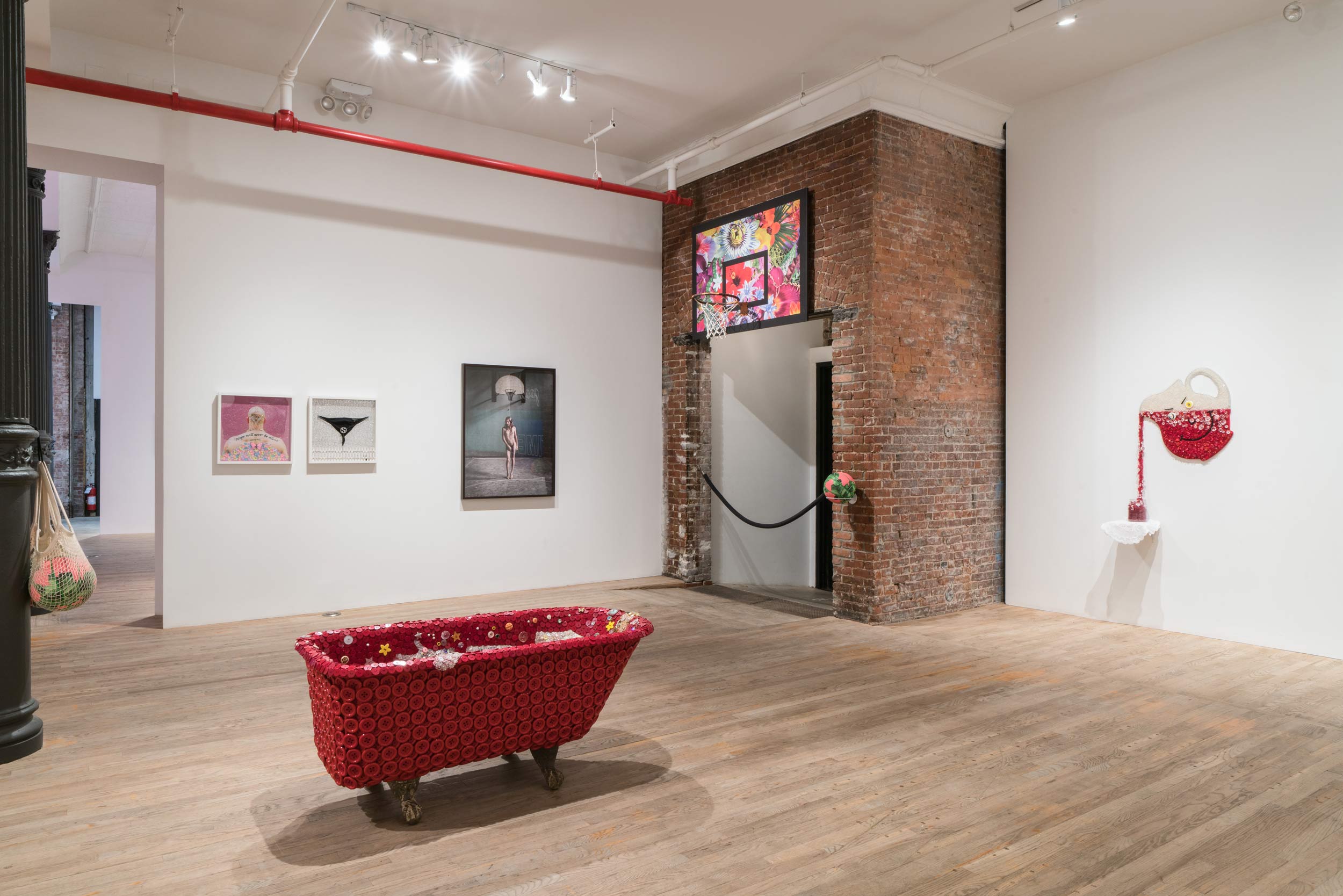Writer and philosopher FT speaks with Magda Sawon of Postmasters Gallery, breaking down her decision to go nomadic after four decades in the game
Born in Poland, gallerist Magda Sawon arrived in New York in 1981 and soon opened Postmasters Gallery with husband Tamas Banovich, originally Hungarian. Four decades and four locations later, the pair decided to try a nomadic approach to the business of showing art. Since 2022, Postmasters has hosted each of its shows in a different space, selected and modified to display and complement the work. Now with five iterations under its belt, Postmasters 5.0 is a dramatic but efficient solution to an increasingly acute New York problem: The rent is too damn high. Document spoke to Sawon about the past and future of the gallery scene, the economics of the art world, and the increasingly complex role of technology in art.
Postmasters 5.0’s next show will be The Chair Series by Molly Crabapple, on view between November 11 and December 15 at 4 Bond Street.
FT: When did you get to New York?
Magda Sawon: I came in 1981, and with degrees in art history which I immediately discarded. At that time, education in art history was completely separated from contemporary art. Criticism, current material never entered the picture, and my interest was always in the art that surrounds you, [that is] kind of reflective of the moment. The other factor was ‘province versus center,’ which is very different right now in the almost-imposed globalism that we have in the art world. But at that time, I was in a little country. I could have been a big fish in a little pond. It was more interesting for me to go to the place that had—or, at least, I assumed it had—the most advanced, progressive, interesting developments in forms of creative expression. So, I came.
FT: How did you end up running a gallery?
Magda: I sold shoes for a couple of years, and then the East Village happened—the first moment in a larger history of the New York art scene, where all these young galleries suddenly popped up. They were run by people from clubs or artists themselves or wannabes, like us, from foreign countries. You could open a place for next to nothing, knowing next to nothing. So we started. We had a gallery in the East Village for about five years, then moved to Soho, then moved to Chelsea, then moved to Tribeca [in 2013]. And now, we are in version 5.0, as we call it, which is nomadic because we ended up choosing to leave that space in Tribeca. We’re very ready to do something else. It has always been an interest of ours to do things that are kind of unorthodox, experimental. It’s great to work with artists at the edge of culture and society because these things are never financially viable. So you’re sort of digging your own little field. And whether the big guy comes and takes the field away, or it dies, or you kind of flourish with it, there are all these different models and possibilities.
FT: For general readers, can you describe the role of a Postmasters-sized gallery in the art ecosystem?
Magda: There’s the ideal version, where the gallery is a place committed to promoting the visibility of the art they deem important—the reality of it being that it is a two-way business, not a philanthropic activity. But the gallery takes care of a lot of managerial and exhibition- and career-related stuff for the artist, so they can be making art and not ‘dealing’ with it. There is no system of support for art and culture in this country on a large scale, except the commercial system. Here and there, someone gets a grant or a foundation gives out a buck, but the reality is that 99 percent of it runs on commerce. So the capacity for distortion and exploitation is enormous on both ends. For a lot of people, it does become about money, and it has especially become about money for the collectors. Collectors historically covered a fairly large spectrum, including middle-class people with a huge degree of curiosity buying little things for relatively little money. More recently. it’s become an industrial complex where the majority of the activity takes place at the top, so the lower level of support also disappeared. You know, these collectors that were fascinated and progressive and driven by curiosity… A lot of these people vanished.
That leaves you in this place of: What’s there to do for galleries like us that don’t really have vertical ambition? Some of the big galleries represent a high quality of art. But to enter that level requires not only an unbelievable amount of funding—it also requires a desire to be there. And we don’t really have that. It’s so much more interesting to operate on this exchange level, where the artist is alive and sometimes completely ahead of people’s understanding of what the fuck it is that they do. I still pride myself in being able to do it at my age. Because, usually, this lasts your generation or one more. You always understand your peers; you always have a great sense of that moment. But to jump over—and, for me, to have a 50-year gap between me and my experience and somebody that is just crawling out of the pencil-and-crayon school of art—that is the most fascinating. That’s what I strive to look for and understand. And it’s not always easy. Everybody makes mistakes. I dismissed things that were great. I also embraced things that kind of filtered themselves out.
FT: Tell me about Postmasters 5.0 and the new free-floating concept.
Magda: We were very ready to do something else, and it came into being as we figured out what we could cut. I still want to fit into the system in its external parameters. That means if we do a show, it’s a proper show—it has a proper run of five weeks, we get proper press, everything is super professional. But I don’t do it one after another after another in the same place. Because we don’t have that place. We run a very efficient business office. After COVID, when the retail model of the city changed, and there were so many empty spaces, we thought it would be good and interesting to find a space for each show and be more specific.
We’ve done five like that in the course of a year, which is less than I would have done [in a fixed gallery]. So we got out of that hamster wheel. I want to make a contribution to culture and figure out how to support it, but also have food at the same time. The fact that we don’t have this unbearable overhead of $50,000 for the space is incredible. Apart from collecting attrition and speculation, the factor that really affects galleries at this mid-gallery level is rent. You know, when I came to Tribeca, there was nobody there—and then it ballooned into a scene which is no longer affordable for any mid-level people. In the last two weeks, four galleries have closed. If you walk around, the spaces are indistinguishable and it’s an airport-slash-hospital whiteness. I think good art has a much stronger capacity for survival than that. You don’t need that. It’s a convention.
“It’s so much more interesting to operate on this exchange level, where the artist is alive and sometimes completely ahead of people’s understanding of what the fuck it is that they do.”
FT: Now that you’ve had five shows in this format, would you say that the 5.0 model is something that other galleries can take up and imitate? Is that your hope?
Magda: I hope so! I advocate for this model as heavily as I can because there is art to be shown—and, you know, people make shows in subway stations. There’s already a level of… not necessarily nomadic, but one-time, site-specific events in New York. It exists. It just doesn’t exist on a slightly more formalized level, which is us. For me, the value is in a certain consistency; even though it’s fluctuating and all over the place, there’s a value to it all being under the umbrella of two crazy people. Like I said, I don’t want to succeed and become a big gallery or a very important person. I just think there is incredible validity to smaller contributions.
FT: Does the new format change the kind of artist you take on or the art you want to show?
Magda: Even in our permanent space, we had huge variability and we showed a lot of artists that were not exactly easy to predict or fit together. Very often, galleries have a certain look, feel, aesthetic. For us, it was always fascinating to throw monkey wrenches into it. But I do have a base of artists that we represent. We have a well-established and very visible presence in the tech art zone and in digital art, but it was always propelled by having that art presented in the context of other art, and more traditional media. It’s more interesting to actually eliminate the front words, like ‘net art’ or ‘digital art,’ and just keep the ‘art’ part.
FT: Postmasters has been ahead of the curve for decades with digital art and generative art. I wonder if you have any comments on the hot-button issue of AI. I know it’s a messy topic.
Magda: It is a messy topic. I don’t know where the good usage of AI in art lies versus where it’s incredibly negative. I still grapple with that. The most obvious topics are already well-addressed: algorithmic bias, copyright, stealing art and livelihood from artists. The obvious point—at least obvious to me—is that AI is a tool. In the hands of good artists, it may result in phenomenal art. And in the hands of bad ones, it will result in crap. Lord knows we don’t need more art crap.
FT: Finally, tell us about your next show and the space it’s going to be in.
Magda: Our next show will be The Chair Series by Molly Crabapple, and we’ll be back at 4 Bond Street, where we had our Machine Violence show. It’s a completely raw space that just has good bones. You can feel the proportions and the skylights and the scale. It’s a post-COVID show for Molly, and probably the most personal she’s had. She’s so well-known and recognized for addressing the most intense issues of our time, political and social—and this is a show where she sort of retreats to one-on-one human connection, making this series of portraits of friends or acquaintances. They come from all different walks of life, and what connects them, apart from Molly, is that they all sit for a live portrait session. Kunstakademie, a hundred percent—no reference photos or anything. They all sit in Great-Grandma Rose’s huge velvet armchair. This connects people that are journalists and philosophers and fire-eaters and couples in love and sex workers and everything. Molly has an unbelievable capacity for bringing together people from different places, and it’s always exciting—always on that same level of curiosity, fascination, and generosity. This also is a moment when [a lot of artists are exploring] portraiture. So it has the content, it has the unifying theme, it has this special place, and it has her hand—which is unbelievable.

















